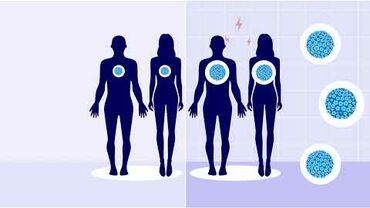Aedes atropalpus - Factsheet for experts
SPECIES NAME/CLASSIFICATION: Aedes atropalpus (Coquillett)
COMMON NAMES: American rock pool mosquito
SYNONYMS AND OTHER NAMES IN USE: Ochlerotatus atropalpus [11]; Georgecraigius atropalpus [12]
Hazard associated with mosquito species
Current issues
Invasive species/Global dispersion
Aedes atropalpus is an invasive North American species that has recently been reported in Europe. Its movement across America and into Europe has been a result of the commercial transport of used tyres which will continue to facilitate its further spread [1,2] .
Ecological plasticity
The success of the invasion of Ae. atropalpus has been due to a number of factors including its ability to utilise used tyres as larval development sites [2] and its ability to produce desiccation-resistant eggs, allowing it to be transported to new areas in infested containers [3]. It also has the ability to produce eggs autogenously (without taking any blood meal) [1] which will no doubt further enhance its ability to exploit new locations more rapidly compared with other mosquito species [4]. A recent study suggests that its ability to exploit novel food sources such as fine detritus is aiding its utilisation of used-tyre aquatic habitats [5].
Biting and disease risk
Laboratory competency studies have shown the ability of Ae. atropalpus to transmit a number of viruses including La Crosse virus [6] and West Nile virus [7], but its importance as a vector of infectious diseases is still unknown [8].
Geographical distribution
Aedes atropalpus is established in America and has been reported in a number of states including: Alabama, Georgia, Illinois, Indiana, Iowa, Kentucky, Minnesota, Ohio and New York. In Europe it has been reported in France, Italy, and more recently in the Netherlands.
Brief history of spread and European distribution
Pathways
Aedes atropalpus is native to eastern North America [9] and although originally limited to areas with rock pools [10], during the 1980s its utilisation of scrap tyres as an alternative larval development site resulted in its spread in America and into Europe.
Timeline of initial movements
Aedes atropalpus was first reported in tyres in the US in 1979 and within two years had become the dominant species in tyre yards in Indiana [6]. Having spread in the US it was then reported in Italy in the 1990s, France in 2003 (S. Chouin & F. Schaffner, unpublished data) and the Netherlands in the 2009 [8].
Initial importations and spread in Europe
Non-desiccating eggs were most likely imported from Canada and the US into Veneto Province in Italy via used tyres. Adults and larvae were found at a tyre depot in 1996 and again in 1997, and initial use of insecticides failed to eradicate populations [2]. In France, some larvae were found at a used tyre yard in Poitou-Charentes (Vienne) in 2003 with evidence of reproduction but not of spreading outside the depot and a second introduction was observed in Normandy (Orne) in 2005, and immediate control measures (insecticiding) aiming also at Ae. albopictus achieved eradication (S. Chouin & F. Schaffner, unpublished data). It is suggested that eggs of Ae. atropalpus were also imported into the Netherlands through the tyre trade. Initial results from traps set up in the vicinity of infested areas have shown that these populations have remained localised to these sites [8].
Possible future expansion
The population associated with latter introduction into the Netherlands has shown little spread. However, preliminary modelling shows that climatic conditions in the Netherlands are not a limiting factor for further spread of this species here or in large parts of Europe [8].
Entomology
- SPECIES NAME/CLASSIFICATION: Aedes atropalpus (Coquillett)
- COMMON NAMES: American rock pool mosquito
- SYNONYMS AND OTHER NAMES IN USE: Ochlerotatus atropalpus [11]; Georgecraigius atropalpus [12]
Morphological characters and similar species
Adults of Ae. atropalpus show a dark and clear pattern due to the presence of clear scale patches on a black background on the legs and other parts of the body, but this looks much less obvious than for the other invasive mosquitoes. The presence of two lateral lines of clear scales on a black background on the scutum (dorsal part of the thorax) is diagnostic compared to Ae. aegypti (lyre shape), Ae. albopictus (one median line), and Ae. japonicus (median and lateral lines). The pale rings on the legs are inter-articular whereas they are only basal for the above mentioned invasive species. Other indigenous Aedes species resemble, but they usually do not breed in tyres and other man-made containers.
Life history (inc. details of overwintering stage)
Eggs can be produced autogenously (i.e. without a blood meal) [13] and as with other invasive mosquito species, these non-desiccating eggs can remain dormant out of water, hatching when submerged and once environmental conditions become favourable.
Seasonal abundance
Adult Ae. atropalpus tend to occur early in the season due to their ability to produce eggs without taking a blood meal [14]. A study in Illinois found high abundance of Ae. atropalpus in tyres in open-field areas and ecotones, being most abundant here in June [4].
Voltinism (generations per season)
Multivoltine
Host preferences (e.g. birds, mammals, humans)
Aedes atropalpus will readily bite humans and have a preference for mammalian hosts [3,15] . Previous studies have found deer and canaries as blood meal hosts [6].
Aquatic/terrestrial habitats
Has a preference for riparian/riverine habitats as rock pools; also human-made containers including used tyres [13]. Typically inhabit warm, sunlit areas with larvae being found in habitats up to 30 °C [16] but are also occasionally found in shaded areas [4]. Their preference for tyres that are in direct sunlight as opposed to those in the shade has also been reported [6]. Larvae are known to congregate at the bottom of rock pools under organic matter [17]. Gravid females have been found laying eggs on the water surface [14].
Biting/resting habits (endo/exophily, endo/exophagy, biting periodicity)
Females are known to be a pest near aquatic habitats [3], with biting activity reported during the day and night [15]. They have a limited flight range [15].
Environmental thresholds/constraints/development criteria
There is currently a lack of understanding of the habitat tolerances of Ae. atropalpus [14], however their northern distribution in North America suggests their potential for survival in northern Europe, as evidenced by populations in the Netherlands. There is some evidence to suggest that populations of Ae. atropalpus have declined in some areas of North America and that this may be due to interactions with Ae. japonicus in aquatic breeding sites [18].
There is currently a lack of understanding of the habitat tolerances of Ae. atropalpus [14], however their northern distribution in North America suggests their potential for survival in northern Europe, as evidenced by populations in the Netherlands. There is some evidence to suggest that populations of Ae. atropalpus have declined in some areas of North America and that this may be due to interactions with Ae. japonicus in aquatic breeding sites [18].
Epidemiology and transmission of pathogens
Known Vector Status (In field, experimental transmission)
This mosquito species is not considered an important arboviral vector in the field. However, West Nile virus has been isolated from field collected Ae. atropalpus [15] and laboratory competency studies have shown it to be a competent vector for West Nile virus, La Crosse virus, Japanese encephalitis virus, Saint Louis encephalitis virus, and Eastern equine encephalitis virus [8]. Studies have found that Ae. atropalpus is susceptible to oral infection with La Crosse virus, capable of transmitting the virus through blood meals and through transovarial transmission [6]. Transovarial transmission has also been demonstrated with Saint Louis encephalitis virus under laboratory conditions [19].
Role as enzootic or bridge vector
Despite vector competence it is yet to be proven that this mosquito naturally transmits any of the above arboviruses. However, Ae. atropalpus shares a habitat with Ae. triseriatus, (primary vector of La Crosse virus in North America), and it is suggested that Ae. atropalpus may become important in the disease transmission cycle [6]. Furthermore West Nile virus has been isolated from a pool of field collected Ae. atropalpus in the US suggesting that further studies are required to ascertain whether this mosquito species could play a role in West Nile virus transmission.
Public health (control/interventions)
Surveillance
Over the past five years, a number of countries in Europe have set up surveillance for Ae. albopictus and other exotic mosquito species [20]. As they are often found in the same habitats, surveillance strategies for one species can apply to many more. No targeted surveillance for Ae. atropalpus exists in Europe; however nationwide surveillance of other invasive species and their introduction pathways in France, Italy and in the Netherlands led to identify foci of imported populations.
Appropriate Sampling Strategy (aquatic larval sampling, adult traps)
Hand-held mouth aspirators, CO2 traps with octenol and BG sentinel traps were used to collect adult mosquitoes in Brabant, the Netherlands [8]. In Illinois, CDC gravid traps, baited with bluegrass sod infusion were placed in wooded areas to collect adults [4].
Species Specific Control Methods e.g. insecticide, public health education etc
Deltamethrin was used to treat areas in Italy after reports of Ae. atropalpus found during surveillance for Ae. albopictus [2]. Malathion is a broad-spectrum organophosphate insecticide that is commonly used as an adulticide for mosquitoes and other agricultural pests. A study has shown Ae. atropalpus to be more tolerant to malathion compared to Ae. triseriatus (in a previous study) and Ae. albopictus [21]. Although there is no specific guidance on control of this mosquito species, much of the guidance for other container breeding species focuses on source reduction and insecticide use, which would be equally applicable in a synanthropic setting for Ae. atropalpus. Personal protective measures to reduce the risk of mosquito bites include the use of mosquito bed nets (preferably insecticide-treated nets), sleeping or resting in screened or air-conditioned rooms, the wearing of clothes that cover most of the body, and the use of mosquito repellent in accordance with the instructions indicated on the product label.
Current Nuisance Biting/Vector Issues in Europe
Blood-seeking females are a nuisance pest, however they are currently not considered to pose a disease risk.
Existing Public Health Awareness and Education Materials
CDC advice for travellers on protection against mosquitoes, ticks and other arthropods
CDC information on La Crosse virus
Key areas of uncertainty
- Further information is required on the distribution of this species in Europe and the potential role of this mosquito in transmitting pathogens.
- It is not yet clear if this invasive species is a potential threat to public health in Europe.
References
1. Beier JC, Travis M, Patricoski C, Kranzfelder J. Habitat segregation among larval mosquitoes (Diptera: Culicidae) in tire yards in Indiana, USA. J Med Entomol. 1983 Jan 27;20(1):76-80.
2. Romi R, Sabatinelli G, Savelli LG, Raris M, Zago M, Malatesta R. Identification of a North American mosquito species, Aedes atropalpus (Diptera: Culicidae), in Italy. J Am Mosq Control Assoc. 1997 Sep;13(3):245-6.
3. Medlock JM, Snow KR, Leach S. Potential transmission of West Nile virus in the British Isles: an ecological review of candidate mosquito bridge vectors. Med Vet Entomol. 2005 Mar;19(1):2-21.
4. Lampman R, Hanson S, Novak R. Seasonal abundance and distribution of mosquitoes at a rural waste tire site in Illinois. J Am Mosq Control Assoc. 1997 Jun;13(2):193-200.
5. Yee DA, Kneitel JM, Juliano SA. Environmental correlates of abundances of mosquito species and stages in discarded vehicle tires. J Med Entomol. 2010 Jan;47(1):53-62.
6. Freier JE, Beier JC. Oral and transovarial transmission of La Crosse virus by Aedes atropalpus. Am J Trop Med Hyg. 1984 Jul;33(4):708-14.
7. Turell MJ, O'Guinn ML, Dohm DJ, Jones JW. Vector competence of North American mosquitoes (Diptera: Culicidae) for West Nile virus. J Med Entomol. 2001 Mar;38(2):130-4.
8. Scholte EJ, Den Hartog W, Braks M, Reusken C, Dik M, Hessels A. First report of a North American invasive mosquito species Ochlerotatus atropalpus (Coquillett) in the Netherlands, 2009. Euro Surveill. 2009;14(45):19400.
9. Carpenter SJ, LaCasse WJ. Mosquitoes of North America (North of Mexico). California: University of California Press; 1955.
10. Nawrocki SJ, Craig GB, Jr. Further extension of the range of the rock pool mosquito, Aedes atropalpus, via tire breeding. J Am Mosq Control Assoc. 1989 Mar;5(1):110-4.
11. Reinert JF. New classification for the composite genus Aedes (Diptera: Culicidae: Aedini), elevation of subgenus Ochlerotatus to generic rank, reclassification of the other subgenera, and notes on certain subgenera and species. J Am Mosq Control Assoc. 2000 Sep;16(3):175-88.
12. Reinert JF, Harbach RE, Kitching IJ. Phylogeny and classification of Finlaya and allied taxa (Diptera : Culicidae : Aedini) based on morphological data from all life stages. Zool J Linn Soc-Lond. 2006 Sep;148(1):1-101.
13. Juliano SA, Lounibos LP. Ecology of invasive mosquitoes: effects on resident species and on human health. Ecol Lett. 2005 May;8(5):558-74.
14. Yee DA. Tires as habitats for mosquitoes: a review of studies within the eastern United States. J Med Entomol. 2008 Jul;45(4):581-93.
15. Turell MJ, Dohm DJ, Sardelis MR, Oguinn ML, Andreadis TG, Blow JA. An update on the potential of north American mosquitoes (Diptera: Culicidae) to transmit West Nile virus. J Med Entomol. 2005 Jan;42(1):57-62.
16. Andreadis TG, Wolfe RJ. Evidence for reduction of native mosquitoes with increased expansion of invasive Ochlerotatus japonicus japonicus (Diptera: Culicidae) in the northeastern United States. J Med Entomol. 2010 Jan;47(1):43-52.
17. Armistead JS, Nishimura N, Escher RL, Lounibos LP. Larval competition between Aedes japonicus and Aedes atropalpus (Diptera: Culicidae) in simulated rock pools. J Vector Ecol. 2008 Dec;33(2):238-46.
18. Armistead JS, Nishimura N, Arias JR, Lounibos LP. Community ecology of container mosquitoes (Diptera: Culicidae) in Virginia following invasion by Aedes japonicus. J Med Entomol. 2012 Nov;49(6):1318-27.
19. Hardy JL, Rosen L, Reeves WC, Scrivani RP, Presser SB. Experimental transovarial transmission of St. Louis encephalitis virus by Culex and Aedes mosquitoes. Am J Trop Med Hyg. 1984 Jan;33(1):166-75.
20. ECDC. Development of Aedes albopictus risk maps. Stockholm: European Centre for Disease Prevention and Control, 2009.
21. Kesavaraju B, Brey CW, Farajollahi A, Evans HL, Gaugler R. Effect of malathion on larval competition between Aedes albopictus and Aedes atropalpus (Diptera: Culicidae). J Med Entomol. 2011 Mar;48(2):479-84.



